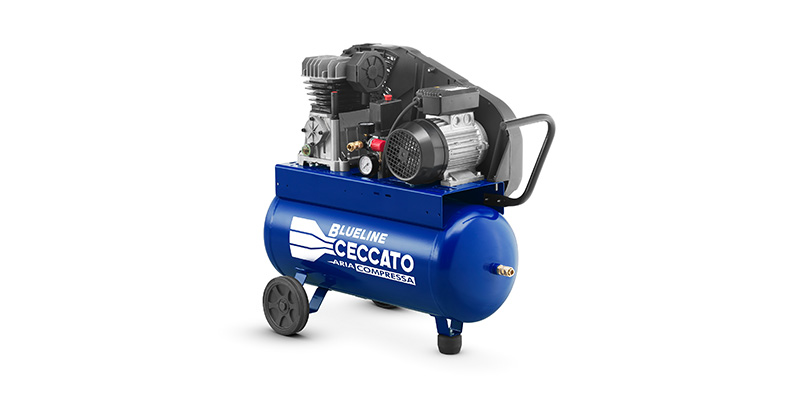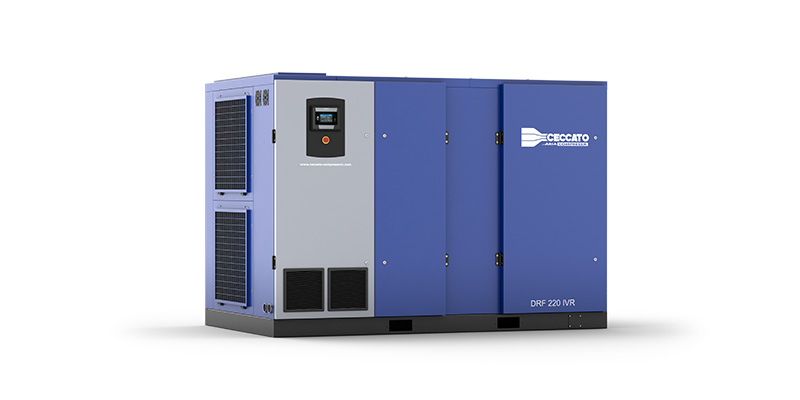F.A.Q.
Is a vessel necessary for piston compressors?
For most applications, you need a vessel. A vessel provides more consistent and fluent airflow to the applications. It will avoid the constant start and stop of your compressor. It also means that your compressor will not have to run all the time, as it will stop when your vessel is filled. All this contributes to less wear and improved service life.
Is it possible to mount an automatic drain under a vessel? And is that an option on pistons compressors?
This is something we even recommend. Moist is one of the results of compressing air, so in order to keep the receiver rust free, and to keep your compressed air system efficient, you need to drain the receiver after every use. This can always be done manually, but also with an automatic drain which has to be ordered separately.
Is it necessary to have filters after the piston, even with lower air deliveries? Looking at the filter documentation, it seems we only offer filters from 1000 l/min onwards?
It is true that the smallest max capacity filters are 1000 l/min. But it doesn’t matter if the flow is 300, 500 or 700 l/m, the only regulation is the max capacity of 1000 l/min. Depending on the applications, it important to have filters both on a piston and on screw compressors as you will be able to:
- Remove dirt particles from compressed air that could damage the final tools/equipment
- Remove the presence of oil in the compressed air that could damage the final product
What the difference is between piston air displacement and real air flow delivered?
When you read a piston sales catalogue of most brands you will find piston displacement flow. This is the amount of air that gets sucked into the compressor before it is compressed. The free air delivery is the compressed air delivered by the compressor element, and this flow is always mentioned at a certain pressure.
What is normally the pay back for an inverter compressor?
The normal pay back is between 1-2 years during normal conditions and 4000 running’s hours per year. Not seldom we see pay backs within a year.
Operating principle of an inverter compressor?
It has almost the same components as a conventional compressor, but there is, of course, a few main differences. It has an integrated inverter and often a more advanced control system. The inverter adjusts the motor speed to the actual air demand. This is controlled by a sensor that measures the system pressure and is notified to the controller of the compressor. The controller registers the pressure and sends a signal to the inverter, which regulates how much air the compressor needs to produce in order to keep the set pressure.
Why is an inverter compressor saving energy?
Because an inverter-driven compressor is not producing more air than needed. A conventional compressor works within a pressure band. When reaching the higher pressure the machine goes into unload mode (the motor is running but no air is produced). When reaching the lower pressure value the compressor starts to build up pressure again until it reaches its unload pressure again. An inverter-driven compressor has less unload time and works towards a set pressure value, this makes the inverter compressors in general 30% more energy efficient than a conventional load/unload compressor.
Why is an internal water separator drain necessary?
First, an internal Water Separator Drain (inside of the compressor) is not necessary. But it can have some benefits in two cases:
1) Screw without an integrated dryer: using a water separator drain, we remove some water from the compressed air, before it's delivered to the final area of use with less water content.
2) Screw with an integrated dryer: using it before the dryer, some of the water gets removed before the dryer, this gives the opportunity to choose a smaller sized air dryer.
Why do I need quality air solution products?
During the compression process, humidity and contamination from the intake air combine with the oil used in the compressor which creates impurities. The different quality air solution products are thus needed to purify the compressed air to prevent it from damaging the downstream equipment. Consequently, air quality is ensured, efficiency and productivity will be increased and the life span of your equipment and tools will be lengthened. In sum, quality air solution products are indispensable whenever you are using a compressed air system.
How do I benefit from having a dryer?
Humidity is a component of atmospheric air which will be transformed into condensate and/or vapor state after the compression process. A dryer will remove this condensate and/or vapor so that dry compressed air is achieved. This will result in a longer life span of your equipment, lower maintenance costs due to less breakdowns, a continuous preservation of efficient production and a higher final product quality.
What is the maximum ambient and inlet temperature for the dryers?
Max ambient temperature is 45°C, and Max working temperature is 55°C .
What is the difference between refrigerant and adsorption dryers?
The refrigerant dryers use refrigerant gas to cool the compressed air. As a result, the water from the air condenses and can be removed. With this technique, we can reach max. 3°C. PDP. An adsorption dryer uses an adsorption material called “desiccant” in order to absorb and remove (by regeneration phase) the humidity from the compressed air. With this method, we can reach a PDP < 3°C. ( -40°C. or -70°C.). An adsorption dryer should also be used when the ambient temperature goes below freezing point to avoid ice building in pipes and applications.
Where should I place the dryer? Before or after the receiver and where should I place the filters?
The optimal solution to have a calm and stable flow over the dryer is to place the receiver before the dryer. Also, the filter should be placed before the dryer but after the receiver. Getting clean air into the dryer extends the dryer's lifetime and will increase your air quality. Ask the customer what the area of use is, for example, instrument air is classified under ISO certification. Talk to your sales responsible if you are unsure how the ISO classing is built up, or read the filter leaflet for advice
Is there any control or monitoring system available for the refrigerant dryers?
The dryers have only a PDP indicator, which indicates if the PDP is inside the range (green zone). NO input and output signals are available.
What advantages follow from installing one or more filters?
Atmospheric air contains in its origin many impurities which, once compressed (and combined with the oil, in the case of oil-injected compressors) may generate abrasive and corrosive emulsions which can damage the distribution lines, the pneumatic devices and the product itself. A wide range of filters is available to purify the compressed air. As a result, productivity, quality and reliability are increased, the wear of the distribution network is limited, and breakdowns are prevented instead of cured.
Can the collected condensate simply be discarded?
No, once the condensate has been removed from the compressed air, it still needs to be cleaned to be aligned with local environmental legislation. For this process, oil-water separators are used. Separating both substances (water & oil) results in rinsed water which can be discarded easily. The limited amount of oil has to be discharged in a specialised disposal centre.
Is it useful to install a vertical air receiver?
Yes, it is useful because this quality air solution product serves several different purposes. First of all, as it is usually placed immediately after your compressor, a vertical air receiver will already separate and remove condensate. Moreover, it will also stabilise pressure peaks and cause a stable air flow which is beneficent for the final tools. Finally, it also fulfils a storage function in order to handle high air consumption.
Established over 80 years ago, Ceccato is one of the most reliable compressed air brands. Ceccato is a pioneer in screw compressors,
investing in innovation, with the aim to offer the newest technology
within the compressors industry.


